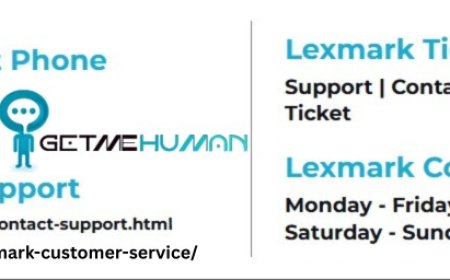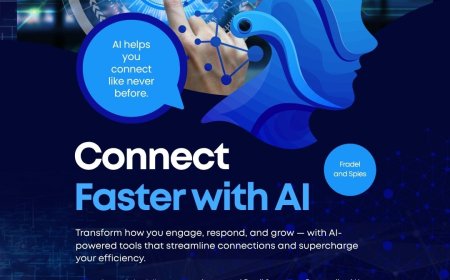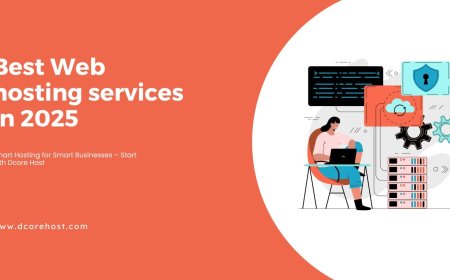The Backend vs Frontend Split: What Clients Should Know
A beginner-friendly explanation of how web development companies divide responsibilities between frontend and backend.

When planning a new website or web application, clients often hear terms like frontend and backend. Both are crucial parts of any web project, but they serve very different purposes. Understanding the difference between backend and frontend helps businesses make better decisions when working with a web development company in Dubai or a web designing company in Dubai.
In this blog, we will break down what these two areas mean, how they work together, and what clients should know when hiring professionals for their web project.
What Is the Frontend?
The frontend is everything that a user sees and interacts with on a website or web app. It includes:
-
The layout and design
-
Colors, fonts, and images
-
Buttons, forms, and menus
-
Animations and interactive elements
In simple terms, the frontend is what brings the websites design to life in the browser.
A web designing company in Dubai focuses heavily on the frontend. Their job is to create a visually appealing, user-friendly, and responsive design that works well on all devices.
Key frontend technologies:
-
HTML: The structure of the web page
-
CSS: Styling, including colors, fonts, and layout
-
JavaScript: Adds interactivity and dynamic features
Modern web development often uses frontend frameworks like React, Vue.js, or Angular to build smooth, fast user interfaces.
What Is the Backend?
The backend is the part of the website that users do not see. It powers everything behind the scenes and makes sure that the frontend works correctly. The backend handles:
-
Databases (where information is stored)
-
Server operations (where the website lives and runs)
-
Business logic (rules that control how data is processed)
When users fill out a form, place an order, or log in, the backend ensures everything happens securely and efficiently.
A web development company in Dubai builds and maintains the backend so that the website is reliable, secure, and able to handle business processes.
Key backend technologies:
-
Programming languages: PHP, Python, Node.js, Ruby, Java
-
Databases: MySQL, MongoDB, PostgreSQL
-
Servers: Apache, Nginx, cloud services like AWS or Azure
How Frontend and Backend Work Together
Think of a website like a restaurant:
-
The frontend is the dining area where customers sit, look at the menu, and place orders.
-
The backend is the kitchen where the chef prepares the meals and sends them out.
For a website to function smoothly:
-
The frontend sends user requests (like logging in or submitting a form) to the backend.
-
The backend processes these requests, retrieves or updates data, and sends a response back to the frontend.
-
The frontend updates what the user sees based on this response.
Without the backend, a site would have no dynamic content or functionality. Without the frontend, users would have no way to interact with the site.
Why Clients Should Understand the Split
When you work with a web designing company in Dubai or a web development company in Dubai, it helps to understand the roles of frontend and backend so you can:
-
Set clear expectations for your project
-
Communicate your requirements better
-
Understand timelines and costs
-
Ask the right questions when reviewing progress
For example, if you want a custom dashboard, user portal, or shopping cart, both backend and frontend teams will need to collaborate closely.
How a Web Development Company Balances Frontend and Backend
A professional web development company in Dubai ensures:
-
The backend is secure, scalable, and efficient
-
The frontend is fast, responsive, and easy to use
-
Both layers work seamlessly together for a great user experience
This balance is achieved through:
-
Careful planning of data flows and user interactions
-
Choosing the right technology stack for the projects needs
-
Building APIs that allow smooth communication between frontend and backend
-
Continuous testing and refinement
Common Challenges in the Frontend vs Backend Split
1. Performance Issues
Sometimes, complex frontend designs or heavy backend operations can slow down the site. Developers optimise code, use caching, and apply best practices to keep the site fast.
2. Security Concerns
The backend must protect sensitive data, while the frontend must prevent user errors that could lead to security risks.
3. Compatibility
The frontend must work well on different browsers and devices. The backend must support various integrations and services.
A reliable web development company in Dubai anticipates these challenges and addresses them during the development process.
Questions Clients Should Ask
When working with a web development or web designing company, consider asking:
-
How will you ensure the frontend is fast and user-friendly?
-
What security measures will you use on the backend?
-
How will the frontend and backend communicate?
-
How will updates or changes to one layer affect the other?
-
What technologies will you use, and why?
These questions help you understand how the company plans to deliver a well-rounded solution.
The Role of APIs in Connecting Frontend and Backend
In modern web development, APIs (Application Programming Interfaces) often connect the frontend and backend. APIs:
-
Allow the frontend to request data or actions from the backend
-
Make it easier to add new features later
-
Support integrations with third-party tools
A skilled web development company in Dubai builds secure, efficient APIs as part of custom web solutions.
Benefits of Clear Frontend-Backend Separation
When done well, separating frontend and backend brings many benefits:
-
Better scalability: You can upgrade one layer without major changes to the other.
-
Improved performance: Each part can be optimised separately.
-
Easier maintenance: Fixing bugs or adding features is simpler.
-
Greater flexibility: The frontend can connect to multiple backends (or vice versa).
A Unified Approach for Best Results
While the frontend and backend have different roles, they must work together as one system. A web development company in Dubai, supported by a web designing company in Dubai, ensures that both layers meet the businesss goals and the users needs.
When clients understand this split, they can make smarter choices, set clearer project goals, and achieve better results. Whether you are building a new website or upgrading an existing one, working with experts who know how to balance frontend and backend is key to success.


























































